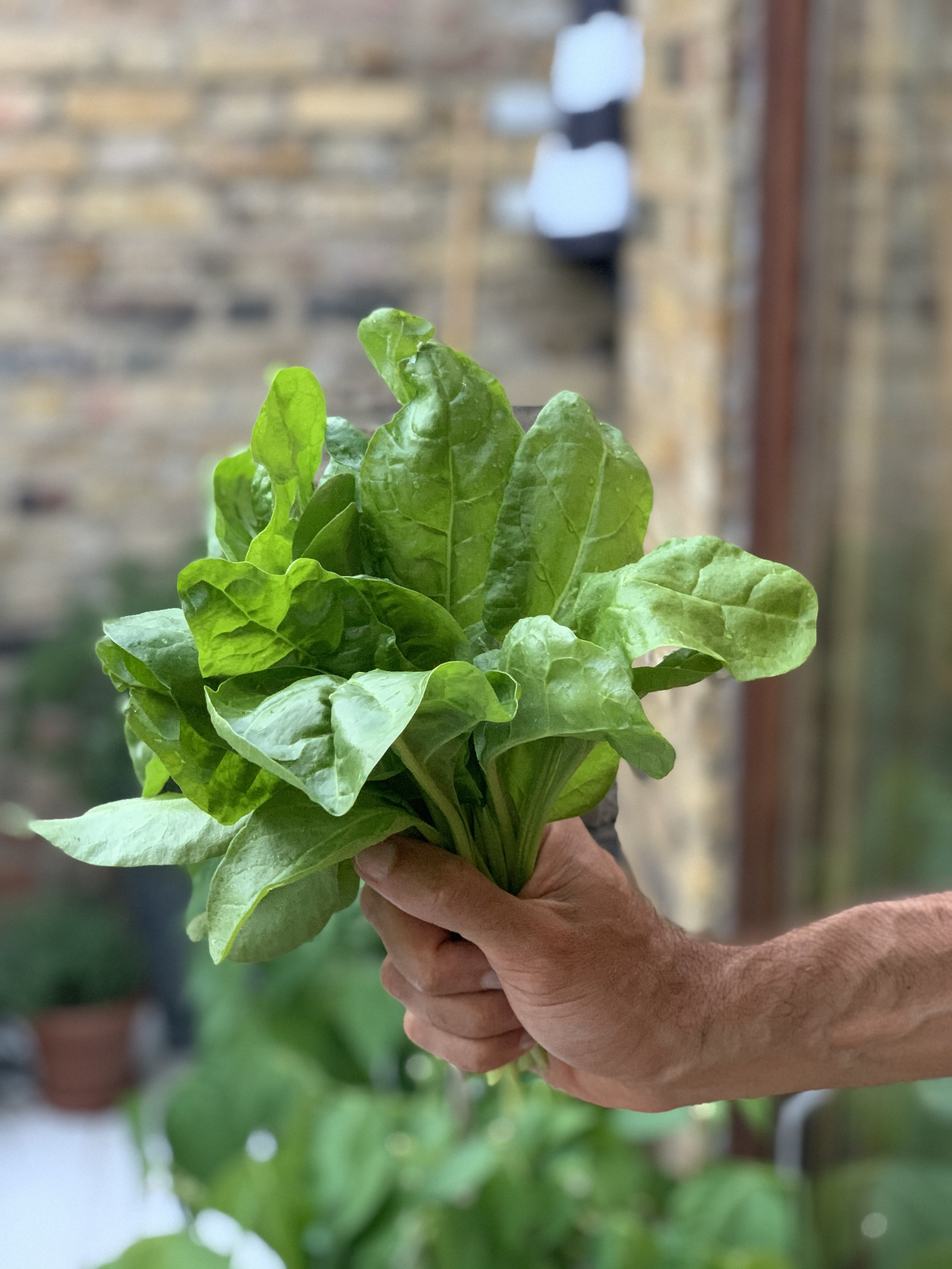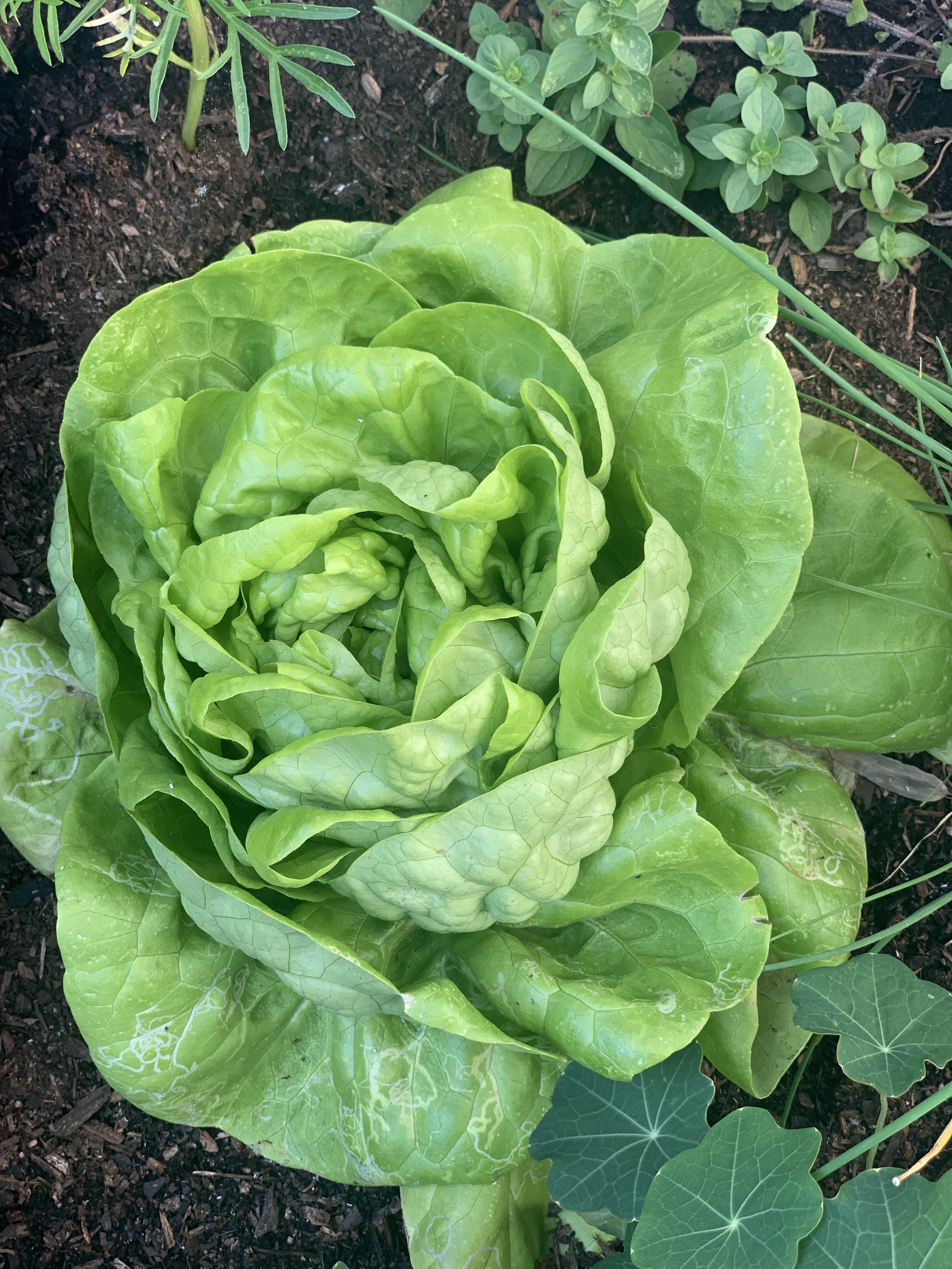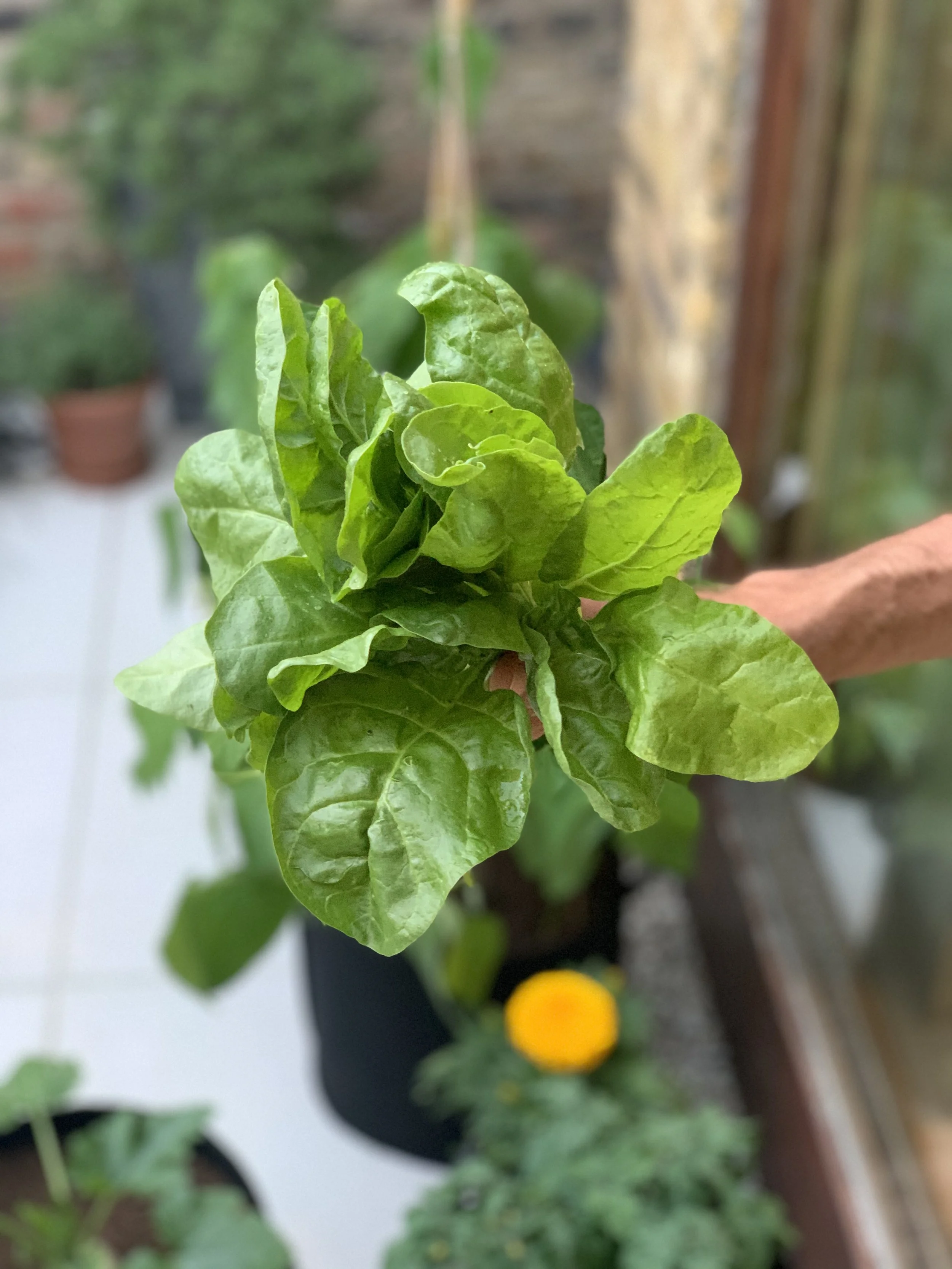The Best Spinach Companion Plants
Companion planting is a practice as old as agriculture itself, offering a harmonious approach where certain plants benefit from being grown next to others.
Among the various plants that have been spotlighted in companion planting strategies, spinach stands out prominently.
The concept of spinach companion plants revolves around understanding which plants bolster spinach's growth and which might hinder it.
By companion planting spinach with the right neighbors, gardeners can attract beneficial insects that ward off common pests.
Moreover, this method can deter unwanted insects and pests that might otherwise attack spinach.
On the flip side, it's equally crucial to know which plants to avoid.
Certain plants might compete for the same nutrients or even attract pests, making it advisable to avoid planting spinach next to them in the vegetable garden.
As we delve deeper into the world of spinach and its companions this post aims to offer invaluable gardening tips to help your spinach thrive.
These insights will not only help in effectively growing spinach but also in understanding the intricate dynamics of the plants surrounding it.
To learn more about vegetable companion planting, check out my guides:
Freshly harvested spinach in my back garden that was grown with companion plants.
The 5 Best Spinach Companion Plants
Pairing spinach with the right plants will lead to mutual benefits that enhance growth, deter pests, and improve overall garden yield.
Lettuce is one of my favorite things to grow alongside spinach.
Lettuce Companion Plants:
Similar Growth Patterns:
Both these leafy greens have a similar growth cycle.
They thrive in cooler weather and have a preference for consistent moisture.
Their harmonious growth ensures they can share resources like water and nutrients without undue competition.
Texture and Color Variations:
Mixing different varieties of spinach and lettuce can lead to a visually appealing garden bed.
The varying textures and colors can be both ornamental and functional, confusing pests and preventing them from infesting in large numbers.
My Recommended Varietal:
'Black Seeded Simpson'. This is a fast-growing, crisp, loose-leaf lettuce variety that's been a favorite among gardeners for decades.
It's heat-tolerant and pairs well with spinach both in growth and in salads.
Here are the ‘Black Seeded Simpson’ seeds I recommend:
Kale is an excellent companion plant for spinach.
Kale Companion Plants:
Nutrient Synergy:
While spinach enjoys nitrogen-rich soil, kale is less demanding.
Their complementary nutrient needs mean they can coexist without depleting the soil.
Physical Barrier:
The sturdy leaves of kale can sometimes act as a physical barrier, shielding spinach from minor pests or even inclement weather.
My Recommended Varietal:
'Lacinato'. This variety is known for its long, blistered leaves and a slightly sweeter taste compared to other kales. I
t's cold-hardy, making it an excellent companion for early spring spinach plantings.
Here are the ‘Lacinato’ kale seeds I recommend:
For more planting tips, check out my guide:
Cucumbers make a great pair with spinach in the vegetable garden.
Cucumber Companion Plants:
Natural Mulch:
As cucumber vines sprawl, they cover the soil, acting as a natural mulch.
This reduces soil moisture evaporation, which benefits the shallow-rooted spinach, ensuring it gets the consistent moisture it loves.
Pest Diversification:
The diverse range of minor pests that cucumbers attract can divert attention from the spinach.
This diversification can reduce the overall pest impact on any single crop.
My Recommended Varietal:
'Marketmore 76'. This is a reliable slicing cucumber with a sweet taste and excellent disease resistance.
Its vining growth habit provides ample ground cover, which benefits spinach.
Here are the ‘Marketmore 76’ seeds I recommend:
Perpetual Spinach Companion Planting:
Extended Harvests:
Perpetual spinach, though not a true spinach, offers a longer harvest period.
Interspersing it with regular spinach can provide a steady and extended supply of leafy greens for the kitchen.
Resilience Boost:
With slightly varied growth patterns and pest resistances, mixing perpetual spinach with regular spinach can increase the garden's resilience to adverse conditions.
My Recommended Varietal:
'Evergreen'. While perpetual spinach is itself a sort of variety, 'Evergreen' is a popular choice known for its steady yield and resistance to bolting, making it an excellent extended-harvest green.
Here are the seeds I recommend:
Companion Plants for Spinach in Containers:
Compact Companions:
Herbs like cilantro, basil, and chives are compact and can grow alongside spinach.
Their aromatic presence might deter pests, while their culinary compatibility means you've got ingredients for a meal right in one pot.
To learn more about growing basil, check out my guide The Best Basil Companion Plants.
Balanced Growth:
In containers, it's crucial to ensure one plant doesn't overshadow or outcompete the other.
Pairing spinach with plants of similar growth rates and water needs can lead to a harmonious container garden.
My recommended Varietal:
'Common Chives'. These are the standard chives most gardeners are familiar with.
They're perennial and can be planted once and harvested for years.
Here are the ‘Common Chive’ seeds I recommend:
Worst Companion Plants for Spinach
While companion planting can offer numerous benefits, it's essential to recognize that not all plants are friends.
Some might compete for nutrients, attract harmful pests, or even exude chemicals that hinder spinach's growth.
Here's a closer look at some plants that might not be the best neighbors for spinach:
Potato Companion Plants:
Shared Pests:
Both spinach and potatoes can fall victim to the same pests, such as the flea beetle.
Planting them in close proximity might increase the concentration of these pests, leading to a more significant infestation.
Nutrient Competition:
Potatoes are heavy feeders and might compete with spinach for essential nutrients, especially potassium.
To learn more about growing potatoes, check out my guide The Best Potatoes to Grow in Bags.
Brassica Family (in some cases):
Potential Pest Magnets:
While some brassicas like kale can be beneficial, others like broccoli or cauliflower might attract pests like aphids and cabbage loopers.
If these pests become abundant, they might migrate to your spinach.
Corn:
Shade Concerns:
Corn grows tall and can cast a heavy shade.
While spinach does appreciate some shade, especially in hot weather, the dense shade from corn might be too much, leading to leggy and underdeveloped spinach plants.
Water and Nutrient Competition:
Corn requires a lot of water and nutrients, which might deprive spinach of its necessary resources.
Sunflowers:
Root Exudates:
Sunflowers are known to release chemicals from their roots that can inhibit the growth of nearby plants.
While this allelopathic effect benefits the sunflower by reducing competition, it might be detrimental to spinach.
Shade and Resource Competition:
Similar to corn, sunflowers can overshadow other plants and consume significant amounts of water and nutrients from the soil.
Benefits of Spinach Companion Planting
Companion planting isn’t just a trendy gardening term—it's a practical and holistic approach that brings forth numerous advantages to both the spinach and its plant neighbors.
Attract Beneficial Insects:
Pollination Boost:
Some companion plants, especially those with flowers, are great at attracting beneficial insects bees and butterflies, promoting better pollination for the entire garden.
Natural Predators:
Plants like marigolds and nasturtiums attract ladybugs and lacewings, which feed on aphids—a common pest that targets spinach.
Repel Pests:
Natural Pesticides:
Many plants release chemicals into the soil or air that deter pests.
For instance, strong-scented herbs can mask the scent of spinach, making it less appealing to pests.
Trap Cropping:
Some plants can be used as sacrificial crops. Pests are more attracted to these plants, leaving the spinach untouched.
Maximize Space:
Growth Patterns:
Spinach has shallow roots, allowing deeper-rooted plants to coexist without competing for nutrients.
Vertical & Horizontal Growth:
Tall plants, like tomatoes, can be grown alongside spinach, using vertical space. In contrast, spinach spreads horizontally, making full use of the ground area.
Provide Shade:
Heat Sensitivity:
Spinach is a cool-season crop and is sensitive to heat.
Tall plants can cast shadows over spinach, creating a cooler microenvironment and preventing premature bolting.
Moisture Preservation:
Shade from companion plants also keeps the soil cooler and more moist, reducing the frequency of watering.
Soil Health and Nutrient Balance:
Nitrogen Fixation:
Legumes, like beans, can fix atmospheric nitrogen, enriching the soil for nitrogen-loving spinach.
Root Exudates:
Certain plants release substances that can enhance the availability of essential nutrients in the soil, promoting healthier spinach growth.
Practical Tips for Implementing Spinach Companion Planting
Companion planting is as much an art as it is a science.
If you're ready to embrace the benefits of spinach companion planting, here are some hands-on tips to guide you:
Rotate Crops Regularly:
This not only prevents soil-borne diseases but also ensures that soil nutrients are not depleted.
If you planted spinach in one spot this year, consider planting beans or peas (nitrogen-fixers) there next year.
Intercropping:
Instead of dedicating large patches to one plant, intermix your spinach with its companions.
This can confuse pests and prevent them from easily jumping from one plant to another.
Utilize Vertical Space:
If you're short on space, grow climbing plants like peas next to spinach.
They can provide shade for the spinach below while maximizing the use of vertical space.
Check out my guide: The Ultimate Guide to Growing Peas in Pots.
Mind the Sun:
Remember that while spinach appreciates some shade, it still needs a good amount of sunlight.
Ensure that taller companion plants don’t overshadow your spinach entirely.
Soil Health:
Enhance soil health by adding compost and practicing mulching. Healthy soil not only benefits spinach but all its companions too.
Observe and Adjust:
Every garden is unique. What works for one gardener might not work for another.
Pay attention to how plants interact in your garden and be ready to make adjustments based on your observations.
FAQs
What grows well with spinach?
Beyond the commonly known companions like lettuce and radishes, spinach also pairs well with strawberries, which can benefit from the shade spinach provides.
Additionally, beans are another excellent partner due to their ability to fix nitrogen in the soil, which spinach can then utilize.
What to plant with spinach to keep bugs away?
Marigold, with its distinct smell, can repel soil nematodes and some flying pests.
Garlic is also a great choice, as its strong odor can deter aphids and even deer.
Additionally, planting borage can help keep tomato hornworms and cabbage worms at bay.
Learn more: Borage Companion Planting: The Best Pairings.
How does companion planting with spinach benefit other plants?
Spinach, with its dense growth, can help suppress weeds, reducing competition for nearby plants.
Additionally, as a cool-season crop, it can provide a protective cover for young plants of warm-season crops, protecting them from late frosts.
What are green and red spinach companion plants?
Green spinach, with its milder flavor, pairs well with beans and peas. The legumes help fix nitrogen, beneficial for spinach.
Red spinach, on the other hand, can be grown with root vegetables like beets and carrots. These root crops utilize different soil levels, ensuring there's no competition for nutrients.
The ancient art of companion planting provides a harmonious approach to gardening, allowing plants to support each other in various ways. By understanding the dynamics between spinach and its potential companions, gardeners can not only optimize their yields but also promote a balanced and biodiverse garden ecosystem.
Spinach, with its rich nutrient content and culinary versatility, deserves a prime spot in any garden. When paired with the right companions, it can thrive, resisting pests and diseases while also enhancing the well-being of its neighboring plants.
Conversely, understanding which plants to keep at a distance from spinach can be the difference between a bountiful harvest and a mediocre one.
Gardening is a continuous journey of learning and discovery. By incorporating the knowledge of companion planting, especially for staple crops like spinach, one can transform a simple garden into a symbiotic sanctuary where plants complement, protect, and nourish each other.
As you sow your seeds and plan your plots, remember that the connections below the soil are as vital as those above. Through thoughtful companion planting strategies, your spinach can be more than just a crop—it can be an integral part of a thriving garden community.
Ready to learn more about companion planting? Check out my guides:











































